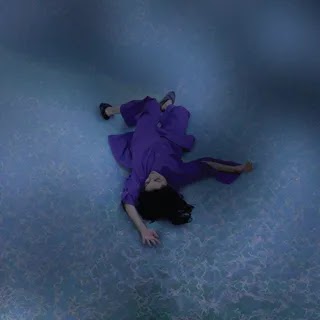The Colombian musician sketches a sci-fi vision of bolero, son, and other classic genres she grew up with. It’s philosophically daring, technically ambitious, and a joy to experience.
Lucrecia Dalt is gleefully cerebral. Over the last decade, the Colombian artist has used her oblique experimental music to ponder metaphysical phenomena and the nature of human consciousness. Dalt has a fondness for philosophical contemplation, and concepts from her training as a geotechnical engineer often creep into her work. On her new album ¡Ay!, she reprises this erudite mode. This time around, the story centers on Preta, an extraterrestrial entity that arrives on our planet and confronts earthly conceptions of temporality, embodiment, and love for the first time. Across 10 tracks, Dalt sketches a sci-fi vision of bolero, son, and other classic genres she grew up with, traced with ambling congas, jazzy double bass, and quivering tides of distortion. Unspooling the rhythmic threads of these styles, she weaves them with strands of opacity and dissonance. Through it all, Dalt poses questions about the rhizomatic essence of time, skillfully using texture and acoustics to make good on the promise of narrative ¡Ay! isn’t just technically masterful; it’s also an audacious statement on cultural identity. In the Western world, traditional or folkloric genres from Latin America, especially ones with African and/or Indigenous origins, are seen as static and creatively stale. These are presumed to be relics of the past, styles that few experimental musicians would touch. But on ¡Ay!, Dalt spurns that kind of colonial thinking. Instead of dismissing the genres of her youth, she transforms and stretches them, demonstrating how capacious they really are. The result is an invitation to broaden narrow interpretations of Latin American music and identity, embracing multiplicity and idiosyncrasy in the process.
All this context might sound heady, but ¡Ay! doesn’t require you to fully comprehend the details of its narrative, or even study its underlying sources. The music is poignant and meticulously arranged, and all you have to do is surrender to it. It helps that the engineering of ¡Ay! is pristine, often evoking a smoky, afterhours lounge, the kind you might find in a spy film from the 1940s. At times, it is so vivid and immersive that it feels as if Dalt is singing directly in your ear—perhaps a byproduct of her recent ventures as a film and TV composer.
Take the standout “El Galatzó.” A somber double bass vibrates, a flute flutters in the air, and galactic synths linger like a UFO hanging in the sky. The warm, open tapping of bongos, played here with wooden sticks, converges with metallic synth stabs, allowing the rhythmic silhouette of a bolero to appear. Dalt assumes the perspective of Preta, keeping her voice low and close to the mic. She enunciates her words with intention, each fricative consonant arriving with controlled, breathy precision. The track unfolds at a slower tempo than bolero and son are typically played, giving it a spellbinding and serpentine touch. By the time the final verse arrives, it no longer feels like Preta is describing her experience of the tangible world; it almost resembles a manifesto, as if Dalt herself refuses to conform to restrictive ideas of identity and genre. “No obedezco a tu verdad lineal,” Dalt sings, high-pitched strings crescendoing in the background: “Romperé tu narrativa/Y alteraré tu paisaje aplanado.” (“I don’t obey to your linear truth…/I’ll disrupt your narrative/And alter your flattened landscape.”)
“Atemporal,” “Bochinche,” and “La desmesura” perfectly capture the genre-crushing force of this record. On “La desmesura,” forlorn clarinets and trumpets resemble a cartoon character tiptoeing into a quiet room. There’s a wistful call-and-response chorus, the kind you might find in a Cuban son of the 1930s. But the song slowly progresses into industrial decay; by its end, mechanical whirring and a strutting double bass collide. “Bochinche” contains similar moments of artful incongruence: Snare drums pitter-pat steadily alongside dapples of cosmic synths, and Dalt briefly retreats into the feeling of a classic Latin American love song, delivering romantic, nostalgic lyrics. But before long, the freakiness returns—she drops phrases like “Cripsis plástica bípeda” (“Bipedal plastic crypsis”). Her style is so hypnotic, you barely register that her words are esoteric references to animal life.
¡Ay! often feels like it’s suspended in time, but somewhere in a faraway galaxy, thousands of years in the future. On the penultimate track, “Enviada,” synths tremble into serrated laser beams and fuzzy waves of distortion descend like cryptic transmissions from space, all over a doleful clarinet and the percussive echoes of bolero. The effect is disorienting and anachronistic, but it also points to the album’s foremost gift, one that transcends even its intellectual and technical ambition. Dalt inverts tradition and forces us into the unknown, unsettling any rigid assumptions about spaces that music of the Latin American diaspora is supposed to occupy.



0 comments:
Post a Comment